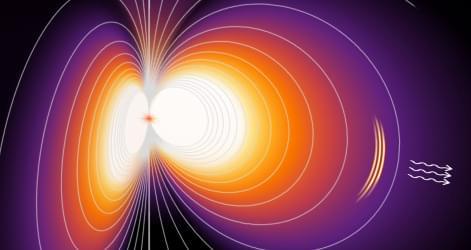Fast radio bursts (FRBs) are short blasts of radio waves whose origins remain a mystery. A new theoretical study explores a possible source in the atmospheres around highly magnetized neutron stars called magnetars [1]. Using numerical simulations, the researchers show that magnetar atmospheres can host powerful shock waves—or “monster shocks”—that produce gigahertz-frequency emissions, consistent with FRB observations.
The first reported observation of an FRB was in 2007, and since then astronomers have collected over a thousand bursts from across the sky. They seem to be connected to compact objects—such as neutron stars or black holes—located at large distances from Earth. “We know that they are cosmological, but their origin and production mechanism remain elusive,” says Arno Vanthieghem from Sorbonne University and the Paris Observatory. He and Amir Levinson from Tel Aviv University, Israel, have explored a possible connection between FRBs and magnetically driven shocks around magnetars.
Previous work has looked at FRB-producing mechanisms around magnetars, but Vanthieghem and Levinson are the first to explore shock-induced radio emission in the inner magnetosphere—the strong-magnetic-field region surrounding a magnetar. The researchers showed that a disturbance, such as a starquake occurring on the magnetar surface, can cause a magnetic-field wave to travel outward through the charged particles in the magnetosphere. They found that this wave can be amplified into a monster shock in which charged particles reach highly relativistic speeds. These particles emit a burst of radio waves that could be seen as an FRB by a distant observer. Vanthieghem says that future observations might be able to provide evidence for this mechanism by pinpointing the location of FRB emission within a magnetar’s environment.









Leave a reply